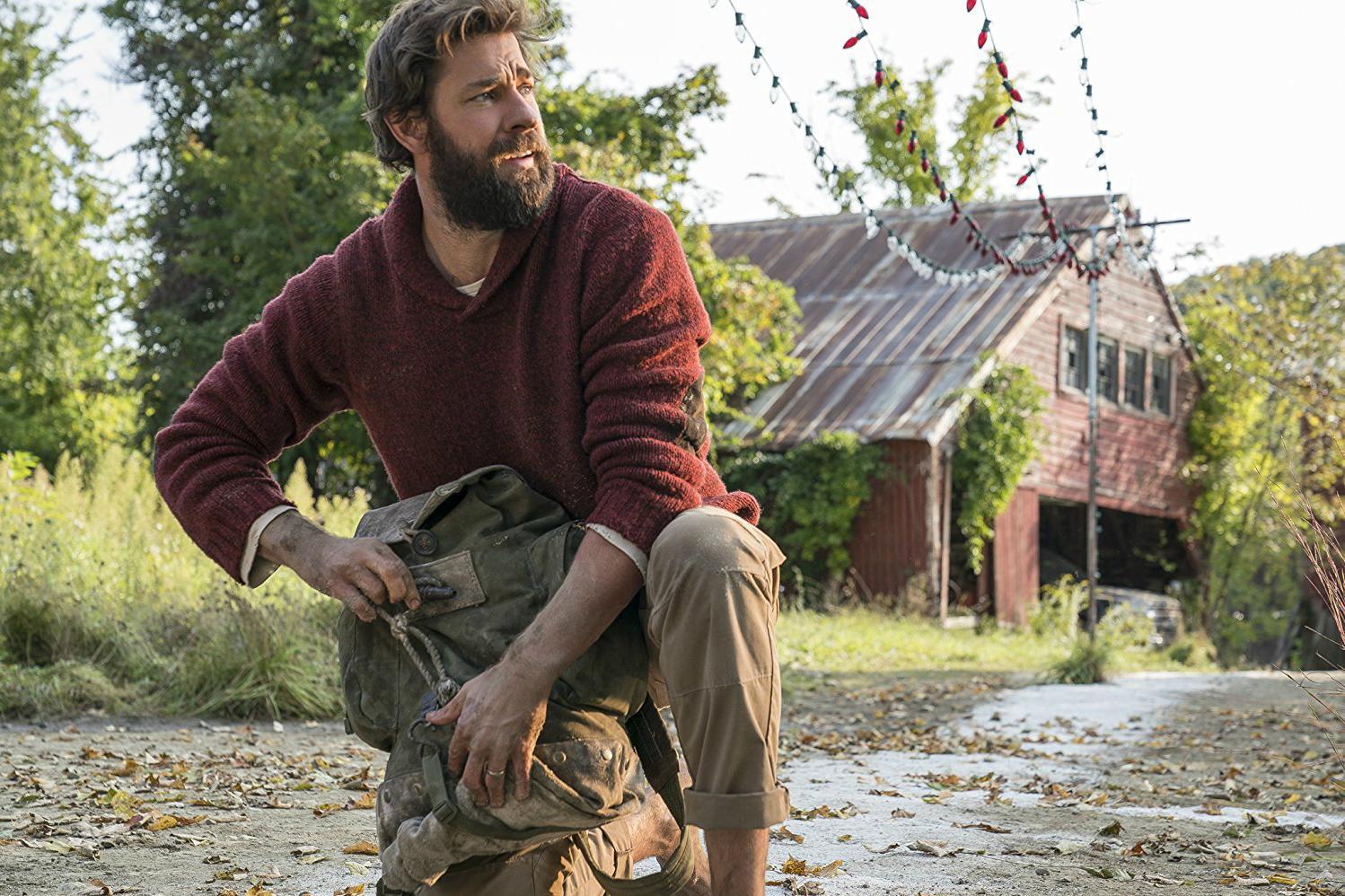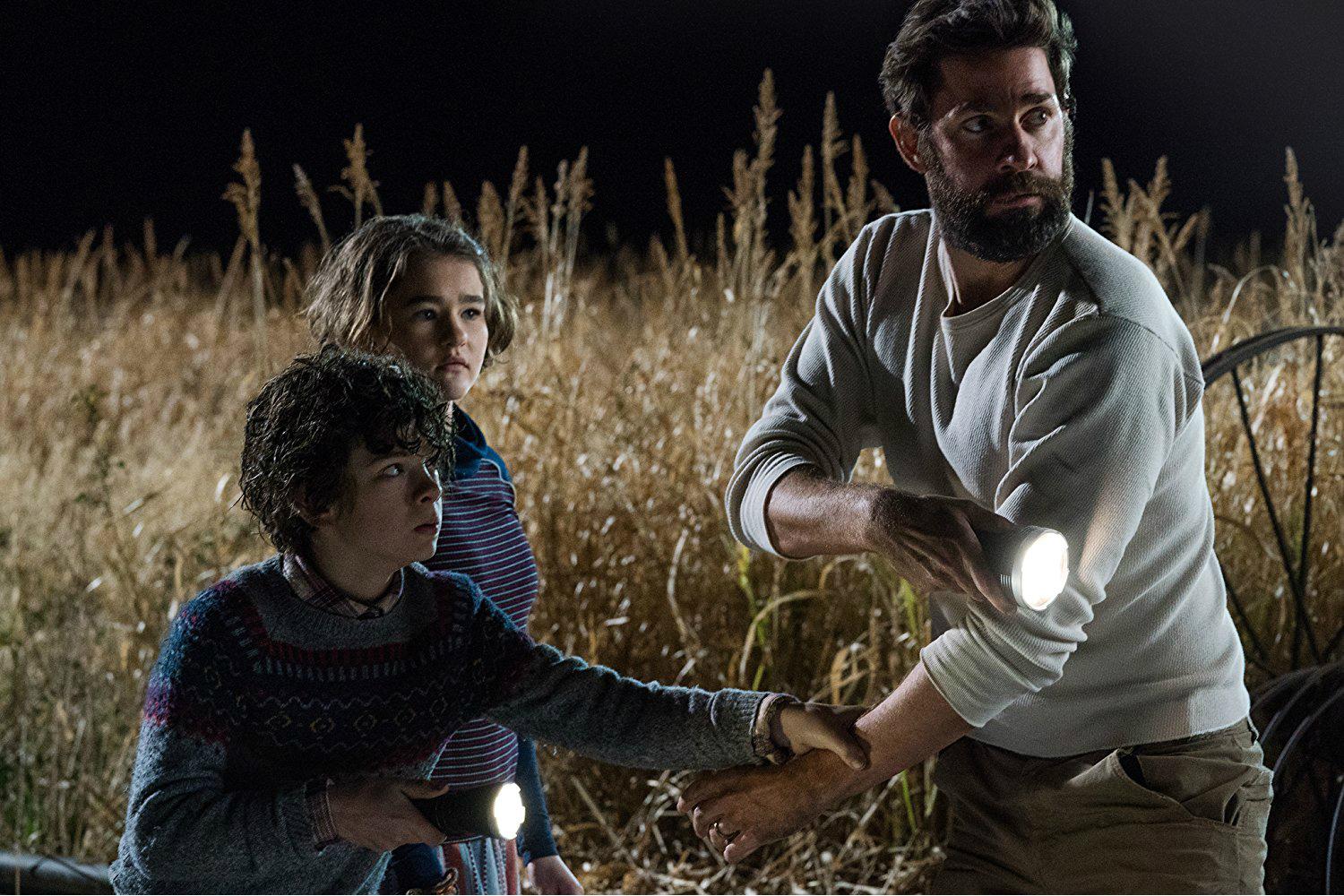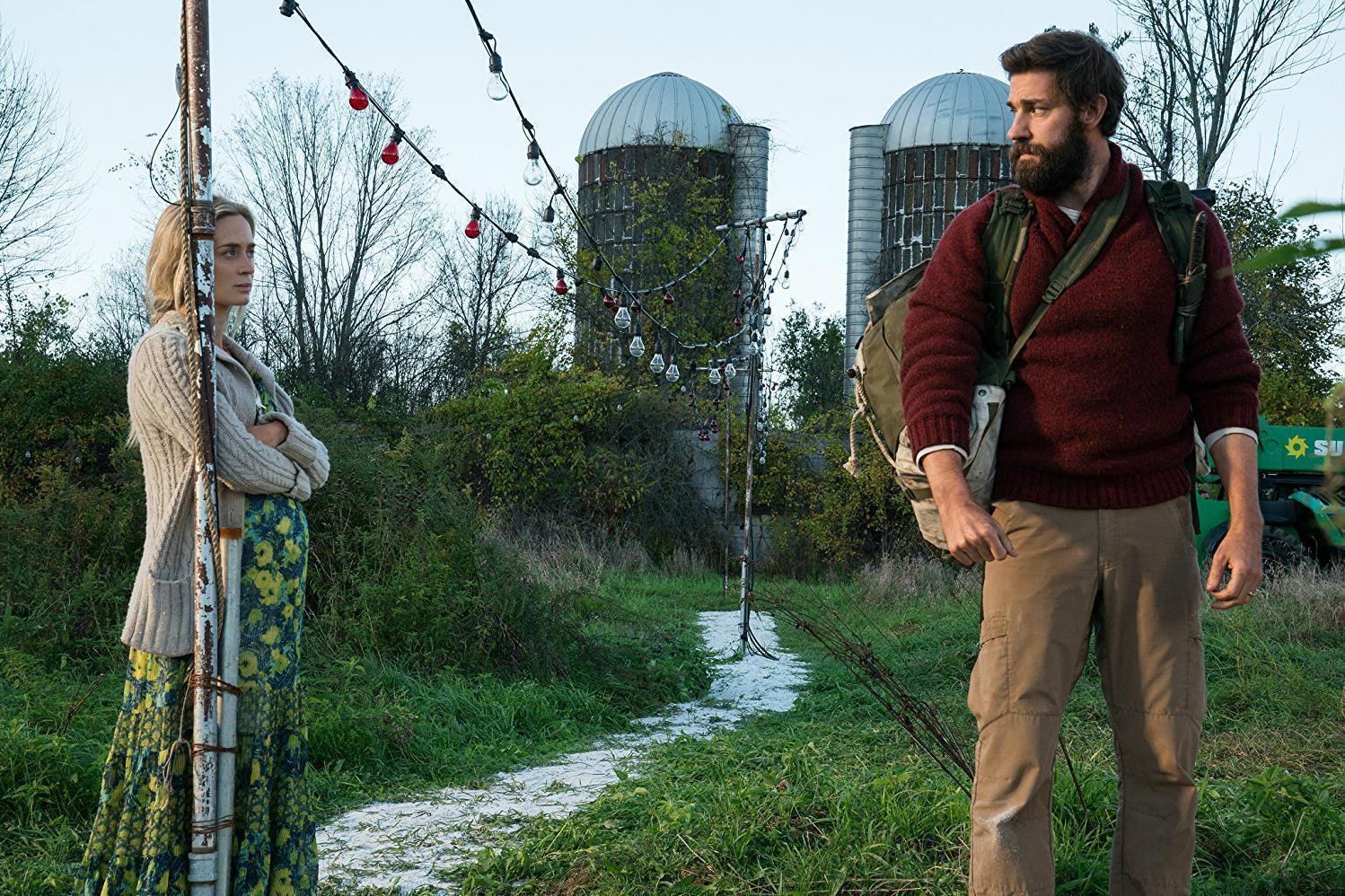John Krasinski interview: From The Office to horror sensation A Quiet Place – what inspired his surprising career
We spoke to the star about what brought him onto such an unexpected career path

John Krasinski may not be the first name that flashes into anyone’s head as a choice to direct a major studio horror film, but the actor-turned-director seems determined to forever subvert your expectations about him. To become an enigma of the very best kind.
From interning for Conan O’Brien to a breakout role in NBC’s The Office, becoming the world leader in knowing looks to camera as the ever-lovable Jim; to the director’s chair and an action lead as Amazon’s new Jack Ryan.
The star isn’t afraid to throw himself into a challenge – and A Quiet Place certainly fits the criteria: a high-concept horror following a small family of survivors months down the line after an invasion, possibly extraterrestrial in nature, of creatures who hunt through sound. You make a noise, you die.
Krasinski leapt onto the project after reading a spec script by team Bryan Woods and Scott Beck, signing up as a co-writer, while also casting both himself and his wife, Emily Blunt. The Independent sat down to talk to him about the process of bringing this intriguing tale to screen, some surprising inspirations, and working with such incredible young talent in the form of Millicent Simmonds.
You’ve got a fascinating career as a director. To go from indie comedy-dramas (2009’s Brief Interviews with Hideous Men and 2016’s The Hollars), then straight to horror. And wasn’t the first thing you technically did the opening credits to The Office?
Technically, yeah, I guess that’s true! That was pretty much the first visual medium, as they say, that I directed. That was just a lot of footage that I put together for myself and then I told Greg Daniels, who created the show, that I had done it.
He said, “Can you show it to me?” And I said, “Yeah. Just look at it for, I don’t know, inspiration or something.” And then, instead, he said: “Can I use it as the opening credits to the show?” I remember being pretty blown away by that.

People have said: “Did you always want to direct?” And, very truthfully, no. I was so happy just being on the show. And then it slowly started coming organically to direct and, I think, because it was organic, because I hadn’t had the intention of doing, I had so much fun with it. I didn’t have a lot of pressure. And then, of course, once you do it once, then you get the pressure of, oh, now you need to do it well.
I remember my director of photography on Brief Interviews with Hideous Men, [John Bailey], very truthfully, at the end of it, we had dinner together and he said: “That was a really amazing experience – it shouldn’t have been.”

Watch Apple TV+ free for 7 day
New subscribers only. £9.99/mo. after free trial. Plan auto-renews until cancelled.
ADVERTISEMENT. If you sign up to this service we will earn commission. This revenue helps to fund journalism across The Independent.

Watch Apple TV+ free for 7 day
New subscribers only. £9.99/mo. after free trial. Plan auto-renews until cancelled.
ADVERTISEMENT. If you sign up to this service we will earn commission. This revenue helps to fund journalism across The Independent.
“You’re a first-time director, with very little money, and this is a very ambitious project. This should have gone horribly wrong. Do you mind if I walk you through where I thought it was going to go wrong?” And it was the craziest, best experience. He literally showed me the roadmap of where not to get in trouble next time, because I’d sort of lived a charmed life the first time.
And now to jump into horror, especially since you’ve confessed in the past you weren’t particularly a fan of the genre.
I am now! I’m a horror fan now. It was funny, I hadn’t thought of this until someone at South by Southwest, a friend of mine, said: “I never pegged you to direct a horror movie.” And I said, me neither, because I couldn’t even watch horror movies.
And he said: “Oh, that’s why this is so good. Because, if you were shooting to make one of the best horror movies, you would have missed completely. And, I think the fact you went into it writing a family drama, that you knew people would bond with this family, the scares are ten times scarier, because I don’t want anything to happen to this family. So, now it makes more sense to me why I liked this movie and why it feels fresh, because you weren’t gunning for something that you knew very well.” And I think that that’s really interesting to me. I’m happy that some of the freshness of the movie might just be my ignorance of the genre.

I wanted to make sure that I got a good amount of experience in what I wanted to do and what scared me. I watched Get Out, The Witch, The Babadook, you know, everything. Instead of looking at others movies and techniques and how to steal from certain things, I wrote down when I was scared. What things really made me nervous. And so, instead of visual style, it was about when I started to get tense. I started drawing out the tension in a different way, because of how it affected me.
I was sort of the perfect test audience for myself, because I hadn’t seen a lot of horror movies. And then, the big thing for me was, the things I did love, were like Hitchcock movies, Jaws, Alien, Rosemary’s Baby. There was something more classic and epic about this, that it felt like a throwback movie. And so that’s sort of what I tried to do with this one.
It’s fascinating, actually, that you brought up Alien. I thought of that film immediately while watching A Quiet Place. Because the horror here is associated much less with jump scares, more with a feeling of utter dread.
The reason I loved Alien so much is my investment in that character, Ripley. When she was deciding which hallway to go down, and you knew which hallway [the Xenomorph] was down. Just watching her make that decision. It wasn’t about, I didn’t want to see her get killed; I was so scared for her, I didn’t want her to make the wrong choice down a hallway.
Or picking which weapon at the end. Like, please, pick the right weapon, oh my god! You just go on what you invest in. If you can get people to invest in these characters, you don’t want them to be attacked by the creature, but you don’t even want them to make a noise.
I’ve always believed the best horror films are structured around metaphor, and what I love about A Quiet Place is that I’ve heard so many interpretations of what that metaphor is. Have you heard lots of different responses, too?
I’ve heard everything from a political takeaway to a breakdown in communication. Most of those I hadn’t even thought of and the best compliment you get after a movie is that people talk afterwards. That’s awesome. But what I was going for was certainly this metaphor for parenthood.
I mean, I was probably the best audience to read the first script, because we had just had our second daughter three weeks before I read the script, and so I was living with the terror of hoping to keep her safe, hoping to keep her alive. Was I a good enough man to be her father? All those themes are in the movie. And so, in my rewrite, that’s what I drilled down to even more.
One of the only people I had to be, sort of, my guardian angel on this was [writer-director-producer] Drew Goddard, who’s a dear friend of mine, and he read the script. His one note was: you have the metaphor on every single page; your job as a director is now to make sure that metaphor is in every single shot. Don’t lean into a scare just for a scare’s sake, try not to do certain things just for visual aesthetic. And I really took that to heart.
It also just vividly reminded me of one specific feeling: when you’re trying to sneak home late at night without waking anyone up. That’s real terror...
You’re the first person who’s nailed this, so I can tell you, but the reason I came up with that idea of putting paint on the floorboards is because of exactly that. I remember coming home late, or when I was a little kid, waking up before my parents trying to sneak down so I could watch TV without them.
And I knew exactly which boards to step on that wouldn’t squeak. And I knew which steps to step on, and which parts of the step to step on. And so, that’s where the idea came from.
Your co-writers Bryan Woods and Scott Beck, who initially came up with the concept, mentioned being heavily inspired by silent film. Is that an inspiration you incorporated into your directing?
It’s not a silent film, it’s a quiet film. Which sounds super semantic, but it’s true. I knew there would be so much sound. There would be so much information coming at the audience in different ways. Certainly, in this day and age, with the big tent-pole movies, which I love, you’re assaulted by sound.

But what I love is that audiences are saying that they’re equally as tense with a lack of sound. What I leaned into were some of my favourite directors and how they dealt with “silence” or quiet scenes.
Who I really revisited a ton was There Will be Blood, by Paul Thomas Anderson, and the Coen Brothers, with No Country for Old Men. There’s a lot of westerns I watched. This to me, feels a lot like a western, and westerns have long amounts of silence. There’s a little bit of The Searchers in there. It’s just this idea of how you deal with not talking rather than a silent film.
What was it like to work with ASL (American Sign Language), which essentially meant creating a film in a language largely new to you?
There’s many different languages and, obviously, there are beautiful languages. But I’ve never known a more beautiful language than sign language. I think actually painting with words is one of the coolest things in the world. Watching Millie [Simmonds, deaf actor who stars in the film] talk to her parents and talk to her brothers. It was really overwhelming at times how beautiful it was and I started asking her what she was saying, and I actually changed some of the lines in the movie because of her.
Also, sign language, I think, is an extension of your personality. One of my favourite things that Millie said was she really enjoyed watching how different our signing was.
Obviously, I knew that our signing techniques were a little different, but it was Millie who pointed out that: [my] character is very shut off and just wants to survive, he’s lost the ability to know and love the beauty in the world. And [his] signing is very curt, it’s very small, it’s very immediate and direct.

Emily’s character is all about, we can’t just survive, there has to be beauty in the world. We have to give a life to our children. So she’s very warm and she’s bigger and she’s more affectionate in her signing. And Millie’s character, there’s a little bit of the warrior princess, the black sheep in the family.
So there’s a signing that’s very defiant, it’s very teenage defiant. So to me, that was one of the things I didn’t know we had in our movie until we talked about it with Millie. But it’s one of my favourite parts of the movie.
In the UK, A Quiet Place is being released alongside Todd Haynes’ Wonderstruck, which, obviously, she’s also in. Did you cast her before or after that film came about?
That’s exactly how we found her. I called Laura Rosenthal, who’s the casting director of Wonderstruck and she works all the time with Todd Haynes, who I’m a huge fan of, and I said: “I imagine you did a wide search for this, can I look at some of the auditions?”
And she said: “I did do a wide search, but I don’t think you need to look at everybody, I just think you need to look at one. The girl we chose is not only an incredible actress, she’s one of the best people you’ll ever meet.” And so, when I emailed Todd, that’s exactly what he wrote back.
The range she shows between these two performances, it’s astonishing.
She is incredible. And one of the things I talked to her about, I just said: “You need to know, when the movie comes out, that you’re going to move people. You’re going to make people feel things. And you need to know, they’re not in love with you because you’re deaf, they’re in love with you because you’re a good actress.” And it’s true. She’s delivering a performance unlike most people can. I can’t wait to see what she does next.
‘A Quiet Place’ is in UK cinemas now
Bookmark popover
Removed from bookmarks